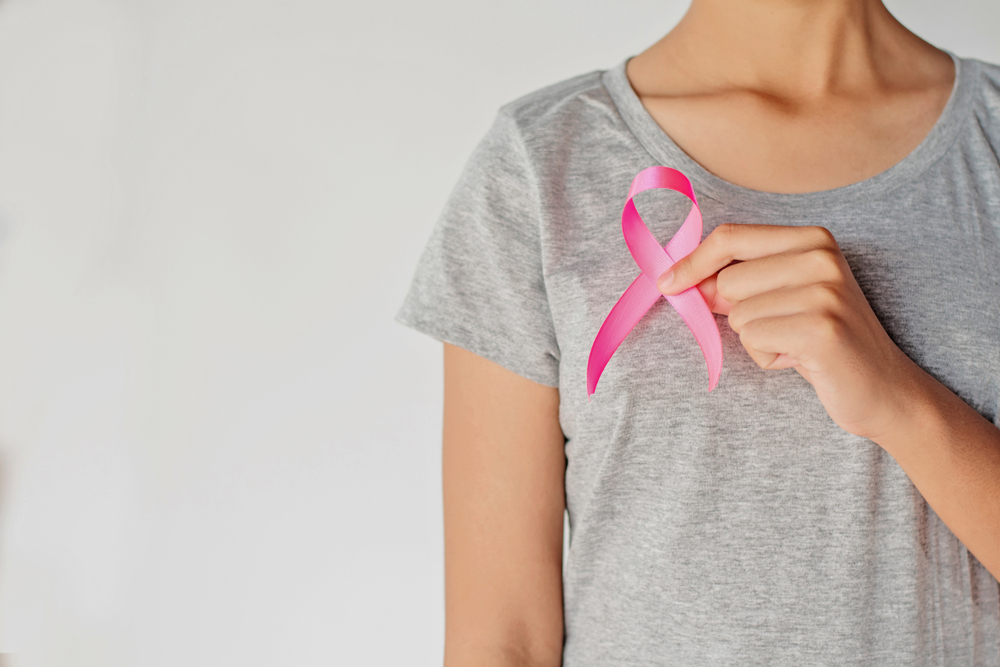Stage 1 Breast Cancer Symptoms
Conditions
•
Oct 5, 2021

This Breast Cancer Awareness Month, we’re here to answer frequently asked questions surrounding stage 1 breast cancer symptoms. Breast cancer is characterized by a tumor, or collection of cells, in the breast that grows out of control. There are several different types and stages of breast cancer each characterized by where the cancer cells are located and how big the tumor is. When caught early, stage 1 breast cancer symptoms are highly treatable.
If you or a loved one was recently diagnosed with stage 1 breast cancer, you may have a long list of questions… What does stage 1 breast cancer mean? What are the four types of breast cancers? What is stage 1 breast cancer treatment? In this article, we are going to walk you through the answers to these questions and advise on when it’s time to seek medical care.
Types of breast cancer
There are four main types of breast cancer including:
- Ductal carcinoma in situ (DCIS): Non-invasive cancer found in the milk duct
- Invasive ductal carcinoma (IDC): Abnormal cancer cells found in the milk ducts that has begun to spread to other breast tissues or parts of the body
- Inflammatory breast cancer (IBC): Aggressive and fast-growing cancer cells invade the skin and lymph vessels of the breast
- Metastatic breast cancer (MBC): Stage 4 breast cancer in which the cancer has spread to other tissues in the body (generally the lungs, liver, bones, or brain)
Breast cancer stages and symptoms
The stages of breast cancer
Breast cancer stages are defined by the cancer’s characteristics including the size of the tumor, whether it has spread to the lymph nodes, and whether it’s progressed to other parts of the body. Knowing the stage can help you and your physician determine possible outcomes, treatment options, and find clinical trials that may be a good fit.
Doctors classify the stages of breast cancers using the TNM system — “T” standing for the size of the tumor and whether it has invaded nearby tissues, “N” stands for whether the cancer has spread to the lymph nodes, and “M” whether it has spread to tissues beyond the breast.
The five stages include:
- Stage 0: Non-invasive cancers that are isolated to their original location
- Stage I: Invasive in nearby tissues and has a tumor size of less than 2cm
- Stage II: Cancer has spread to the lymph nodes but not outside of the breast tissues, tumor size of between 2-5cm
- Stage III: The cancer has reached muscles and skin, invaded the lymph nodes, but has not spread to tissues outside of the breast tissues, the tumor is bigger than 5cm
- Stage IV: Invasive cancers that have spread to other parts of the body
To learn more about the TNM staging system and your specific case, please consult with your physician.
Symptoms of breast cancer
According to the CDC, not everyone shows symptoms of breast cancer –– but if they do exhibit symptoms, warning signs can include:
- New lump in the breast or underarm (armpit)
- Thickening or swelling of part of the breast
- Irritation or dimpling of breast skin
- Redness or flaky skin in the nipple area
- Retracted nipple
- Noticeable changes in breast size or shape
- Breast pain
This is why regular mammograms and self-checks are so important. If you notice any of the above symptoms, don’t wait to make an appointment with your doctor. These symptoms may also be warning signs of other conditions outside of breast cancer.
Stage 1 breast cancer treatment
Breast cancer can be fatal if left undiagnosed or untreated, but it is highly treatable when caught early. Stage 1 breast cancer treatment will depend on the type of cancer. Generally, it includes either surgery to remove cancer, reconstruction of the breast if needed, hormone therapy, radiation, or a combination of these. So, is chemo needed for stage 1 breast cancer? Chemotherapy is not usually part of the treatment plan for earlier stages of breast cancer.
Being diagnosed with breast cancer at any stage can be a fearful experience. Therefore, managing stress symptoms is also a critical part of any treatment plan. Stress has been shown to make cancer spread faster. It also weakens the immune system and can lead to depression or anxiety. You can manage chronic stress by relying on a community, speaking to a psychologist, and exercising.
Worried about stage 1 breast cancer symptoms? Complete Care 24/7 ER is here for you.
We understand that getting diagnosed with breast cancer, regardless of its stage, can bring a lot of fear to yourself and those you love. If you notice any warning signs of breast cancer, Complete Care’s free-standing ERs offer walk-in emergency care services including ultrasound scans and on-site testing to help diagnose breast cancer and direct you to a specialist.
Visit your nearest Complete Care location for quick, efficient, patient-centered care today.
More Helpful Articles by Complete Care:
- Broken and Severe Ankle Sprain Treatment
- What Causes High Cholesterol
- 7 of the Most Common Work-Related Injuries
- How to Get Rid of Sunburn
- How SPF Works and Which is Better For Sun Protection?
